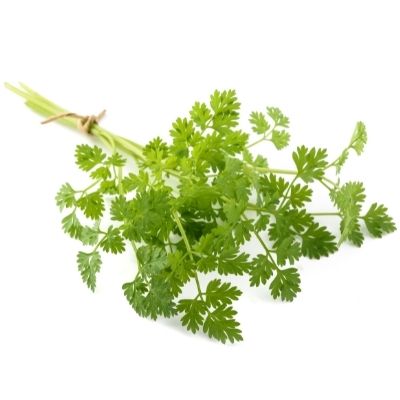
Botanical name : Anthriscus cerefolium
Flavor Profile : Like parsley with a sweet and mild aniseed like undertone.
A signature herb of French cooking used as salad dressing and seasoning, chervil is also widely considered as a medicinal herb.
Annual or biennial herb with soft, bipinnate leaves; when crushed, have aniseed aroma.
Despite its resemblance to parsley, fennel and dill, chervil is a member of the carrot family. Also, its leaves have a high resemblance to carrot tops.
Also known as French parsley, garden chervil, parsnip chervil, salad chervil or “rich man’s parsley“, chervil is considered as a warmth-giving herb. Like warmth, it fills the senses slowly and subtly by its taste and fragrance.
The species name cerefolium means “leaves like wax” (may be because of its bright green color. However, some believe that the term is misspelled, and should be spelled chairephyllon (Greek name used by Romans for this plant), which means “to delight in” (may be because of the pleasant aroma).
Regardless of which interpretation you prefer, all I would like to say is that this plant is extremely nutritive and beneficial.
Chervil was also once called as ‘myrrhis‘ as the oil extracted from this plant had an aroma similar to biblical resinous substance called ‘myrrh‘ (Myrrh brought by wise men to baby Jesus). Hence it is also linked to Easter celebrations in many pats of Europe. It is used to make a traditional dish of chervil soup on Holy Thursday.
TYPES OF CHERVIL
- Anthriscus cerefolium – French parsley, garden chervil, parsnip chervil, salad chervil
- Anthriscus caucalis – Bur chervil
- Anthriscus sylvestris – Wild chervil
- Root chervil, turnip root chervil, tuberous root chervil
Health benefits of Chervil
Herbalists have used chervil for centuries as a diuretic, tonic, and as a remedy for scrofula and chronic eczema.
As well as soothing stomach upset, chervil lowers blood pressure and helps circulation because of its very low saturated fat content and absence of sugar and cholestrol.
Aside from relieving inflammation, it has also been used to treat skin inflammation, such as acne, sunburn, pigmentation and topical allergies.
Chervil is a rich source of vitamin A, B6C and Beta carotene. It is also very high in protein (23 g per 100 g).
100 Grams of chervil contains 230 calories per 100 gram.
How to grow chervil indoors
Chervil is a biennial herb which is grown from seeds in the months of early spring or autumn. It is not frost resistant and is hardy to zone 7.
It will start blooming from May to June and the ripening of seeds will take place in the months of June and July.
In temperate regions, seeds can be sown between March and April. Meanwhile, seeds are sown during October in tropical and subtropical regions.
It can be planted in the garden and also thrives in a container.
Plant size
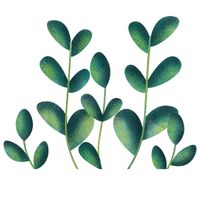
1 – 3 feet ( 30 -90 cm )
Container / pot Size

8 to 12 inches in depth. 12 inch diameter container is a good choice.
Refer how to choose the right container for your indoor plants for more details.
Sunlight
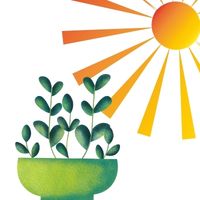
Partial sun. Chervil plant can thrive in shaded locations.
Then again, lighting conditions depend greatly on your location. In summers you can keep the plant in cool area with partial sunlight. In winters you can expose the plant to a little bit more of a sunlight. Protecting it from summer sun is crucial.
You can place the plant in a cool hallway. Or you can place it near or on the north, east, west or south facing walls with east or west facing window. You can even choose a dark corner or center of a room with east or west facing window.
Refer Best locations and Light requirements for indoor plants for more details.
Soil

Fertile, rich and well drained potting mix. A soil temperature of 55 to 65 degree Fahrenheit (12 to 18 degree Celsius) is considered ideal for growing chervil indoors.
You can add compost to make the potting mix a bit more fertile.
Chervil can also grow in light (sandy), medium (loamy) and heavy (clay) soils.
A soil pH of about 6.5 is considered ideal for growing chervil.
Please refer How to get the right potting mix for your container plant for more details.
Sowing
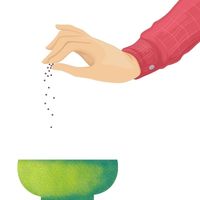
It is advisable to only sow chervil by seeds because the chervil seedlings are too fragile to transplant. Plant seeds 1/2 an inch deep in the potting mix.
In case you are trying to plant multiple chervil plants in one container, a spacing of 12 inches is advisable.
Quick tip: Try to bed the seeds on damp sand before being sown. This will increase the germination rate of chervil seedlings.
In almost 14 days, you will see seedlings start to germinate.
Watering
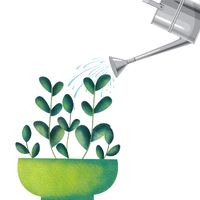
On regular basis. Keep the potting soil moist consistently.
Chervil is a herbaceous crop and hence it requires very frequent watering. (unlike other Mediterranean herbs).
Harvesting

The leaves can be harvested after 6-8 weeks of sowing.
Depending on the purpose of harvesting (such as for seeds or for salads), the harvesting time of chervil varies.
In case you are growing chervil for the purpose of edible food, make sure you are removing the flowers well before the time of the harvest. This will ensure the best yield. This practice is not required in case you are growing chervil for seeds.
Quick Tip : In case you have harvested a lot of leaves from the plant, cut the plant close to the ground. This will trigger more growth.
Plant care

Make absolutely sure that the chervil plant is not exposed to direct hot sunlight.
In case you think it is absolutely necessary to transplant the chervil seedlings to a bigger container, wait till the seedlings grow up to 7-8 cm. Chervil seedlings are very fragile.
Refrain from using fertilizer as chervil plant responds better to organic practices.
SUBSTITUTES FOR CHERVIL IN THE KITCHEN
- Fennel leaves
- Sweet Cicely
- Dill
- Tarragon
- Parsley
How to keep chervil fresh
Wrap fresh chervil leaves in a moist paper towel. Placed it in a plastic bag, and placed in the crisper section of the refrigerator.
You can even freeze store chopped chervil for as long as 3 months.
In case you wish to dry chervil leaves, air drying is recommended. Make sure to avoid windy locations as after drying, chervil leaves become brittle and can break and risk being blown away.
Please refer to how to store herbs and spices for more details.
How to use chervil in the kitchen
Fresh chervil leaves can be used raw in salads or as a flavoring in cooked dishes like soups and stews. Chervil leaves are an integral component of ‘bouquet garni‘.
Herbs such as chervil are known to enhance other herbs’ flavors. Vinegar and bitter greens are balanced out by chervil by adding a sweet undertone. Chervil also goes well with other springtime dishes.
The flavor profile of the leaves will be reduced by drying them. However, dried chervil flakes can also be added to soups, grilled meats, and breads as a seasoning.
Dishes : Sauces, soups, salads, pasta, bread, grilled meat, marinades, and dressings.
Preparation : Used as whole or chopped fresh leaves. Also used as season in dried form.
Pairing chervil with food
Seasoning : Tarragon, thyme, Lemon juice, Garlic, Parsley, Chives, Balsamic vinegar, mustard greens and seeds, hyssop, chicory, basil, mint, dill, fennel, rosemary, capers.
Fruits and Vegetables : Potatoes ( White Potato, Red Potato, Russet Potato, Purple Potato ), Oranges, lettuces (Romaine lettuce, leaf lettuce, iceberg lettuce), mushrooms (Enoki Mushroom, Morel Mushroom, White Mushroom / Button mushroom, Cremini Mushroom, Portabella Mushroom, Shiitake Mushroom, Maitake Mushroom, Chanterelle Mushrooms, Oyster Mushroom), onions, beets, tomatoes, arugula, zucchini, endive ( curly endive, Belgian endive ), watercress, broccoli rabe, kale, spinach, green beans, celery, asparagus, shallots, carrots, peas.
Proteins : Chicken, cream, fish and seafood, cheeses, turkey, beans, eggs


1 comment
Thanks for your blog, nice to read. Do not stop.